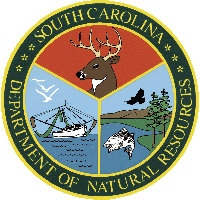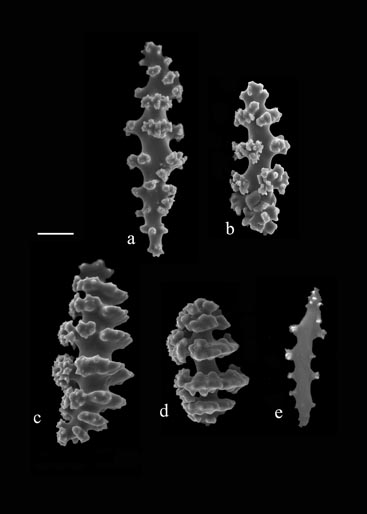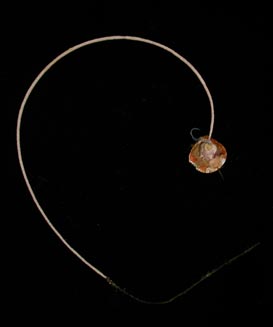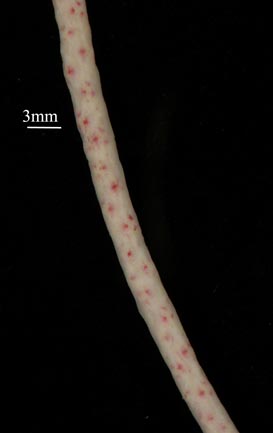CONTENTS
Introduction
The South Atlantic Bight
Methods
Octocoral Morphology
Glossary
Gorgonacean
Bauplan
see this for keys
Notes on the Species
Carijoa
riisei
Scleranthelia
rugosa
Telesto fruticulosa
Telesto nelleae
Telesto sanguinea
Bellonella rubistella
Pseudodrifa nigra
Nidalia occidentalis
Iciligorgia schrammi
Diodogorgia
nodulifera
Titanideum
frauenfeldii
Muricea pendula
Thesea nivea
Bebryce cinerea
Bebryce parastellata
Scleracis guadalupensis
Paramuricea sp.
Leptogorgia hebes
Leptogorgia punicea
Leptogorgia
cardinalis
Leptogorgia virgulata
Leptogorgia setacea
Leptogorgia euryale
Viminella
barbadensis
Renilla reniformis
Sclerobelemnon
theseus
Stylatula elegans
Virgularia presbytes
| Guide
to the Shallow Water (0-200 m) Octocorals of the South Atlantic
Bight.
S. T. DeVictor
& S. L. Morton, 2007
Leptogorgia setacea
(Pallas, 1766) Remarks. Leptogorgia setacea
is usually unbranched and often completely unattached. When
it is attached it is usually to a small, vacant bivalve shell. The
single branch is usually between 2 and 4 mm in diameter and can
reach 2 m in length (Deichmann 1936). The calyces are arranged in
a single or multiple rows along the sides of the branch, and often
are a darker color than the coenenchyme. The calyces may be moderately
prominent or flush with the coenenchyme. Sclerites are in the form
of acute, warty spindles reaching 0.2 mm in length and smaller,
belted disc spindles and capstans. Anthocodial rods are usually
less than half the length of the large spindles. The colonies are
purple, yellow, or pale lavender with dark purple calyces. Atlantic distribution: Chesapeake Bay to Florida, Gulf of Mexico, Colombia to Brazil 1-68 m (one record from Guyana indicates collection at 9245 m, but this is likely an error in the data). Deichmann recorded specimens from Bahamas and West Indies, but no depth was mentioned (Deichmann, 1936; Bayer, 1961; NMNH collections; SERTC collection).
|
|
 |


